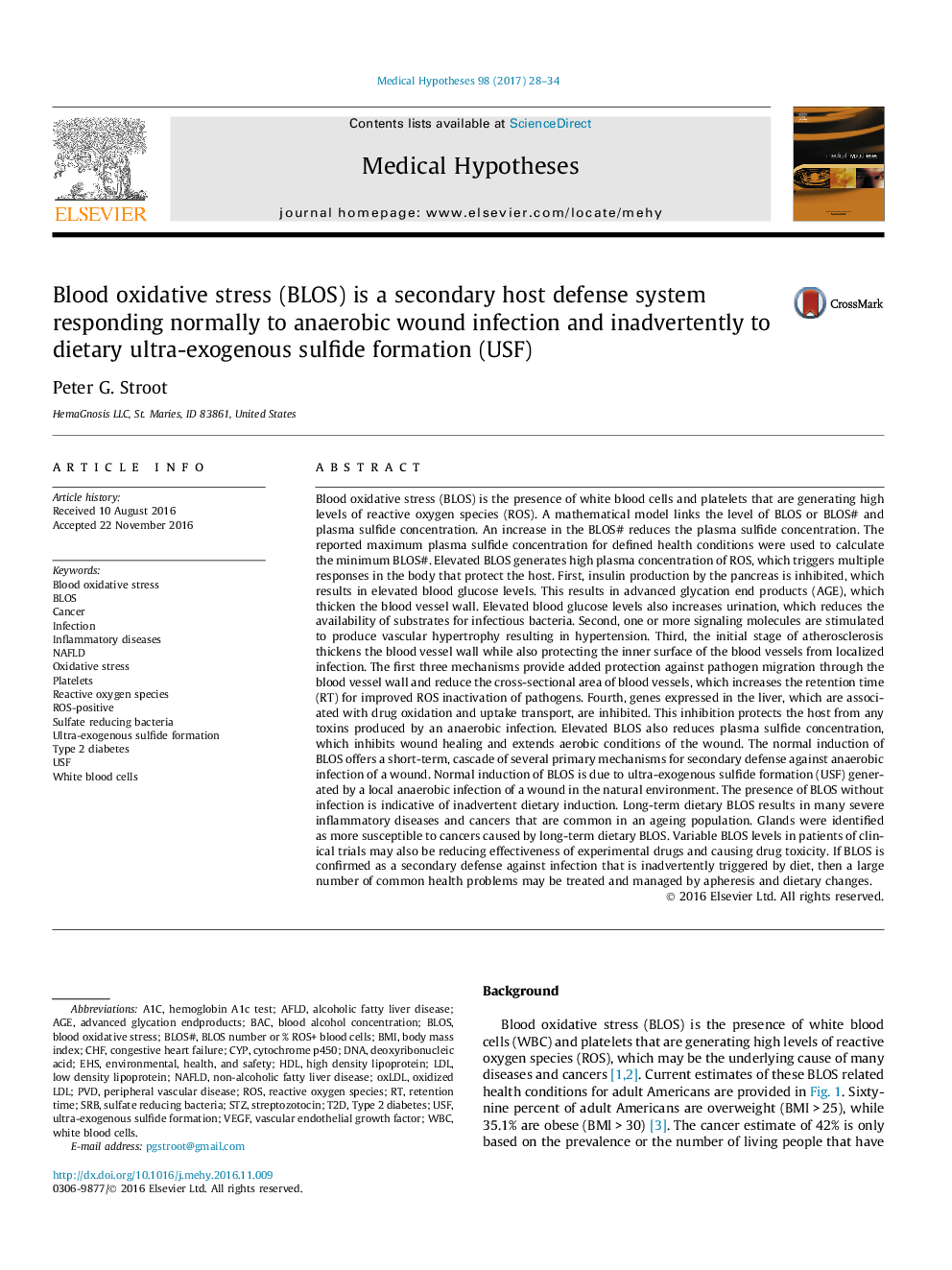| کد مقاله | کد نشریه | سال انتشار | مقاله انگلیسی | نسخه تمام متن |
|---|---|---|---|---|
| 5548596 | 1556547 | 2017 | 7 صفحه PDF | دانلود رایگان |

Blood oxidative stress (BLOS) is the presence of white blood cells and platelets that are generating high levels of reactive oxygen species (ROS). A mathematical model links the level of BLOS or BLOS# and plasma sulfide concentration. An increase in the BLOS# reduces the plasma sulfide concentration. The reported maximum plasma sulfide concentration for defined health conditions were used to calculate the minimum BLOS#. Elevated BLOS generates high plasma concentration of ROS, which triggers multiple responses in the body that protect the host. First, insulin production by the pancreas is inhibited, which results in elevated blood glucose levels. This results in advanced glycation end products (AGE), which thicken the blood vessel wall. Elevated blood glucose levels also increases urination, which reduces the availability of substrates for infectious bacteria. Second, one or more signaling molecules are stimulated to produce vascular hypertrophy resulting in hypertension. Third, the initial stage of atherosclerosis thickens the blood vessel wall while also protecting the inner surface of the blood vessels from localized infection. The first three mechanisms provide added protection against pathogen migration through the blood vessel wall and reduce the cross-sectional area of blood vessels, which increases the retention time (RT) for improved ROS inactivation of pathogens. Fourth, genes expressed in the liver, which are associated with drug oxidation and uptake transport, are inhibited. This inhibition protects the host from any toxins produced by an anaerobic infection. Elevated BLOS also reduces plasma sulfide concentration, which inhibits wound healing and extends aerobic conditions of the wound. The normal induction of BLOS offers a short-term, cascade of several primary mechanisms for secondary defense against anaerobic infection of a wound. Normal induction of BLOS is due to ultra-exogenous sulfide formation (USF) generated by a local anaerobic infection of a wound in the natural environment. The presence of BLOS without infection is indicative of inadvertent dietary induction. Long-term dietary BLOS results in many severe inflammatory diseases and cancers that are common in an ageing population. Glands were identified as more susceptible to cancers caused by long-term dietary BLOS. Variable BLOS levels in patients of clinical trials may also be reducing effectiveness of experimental drugs and causing drug toxicity. If BLOS is confirmed as a secondary defense against infection that is inadvertently triggered by diet, then a large number of common health problems may be treated and managed by apheresis and dietary changes.
Journal: Medical Hypotheses - Volume 98, January 2017, Pages 28-34